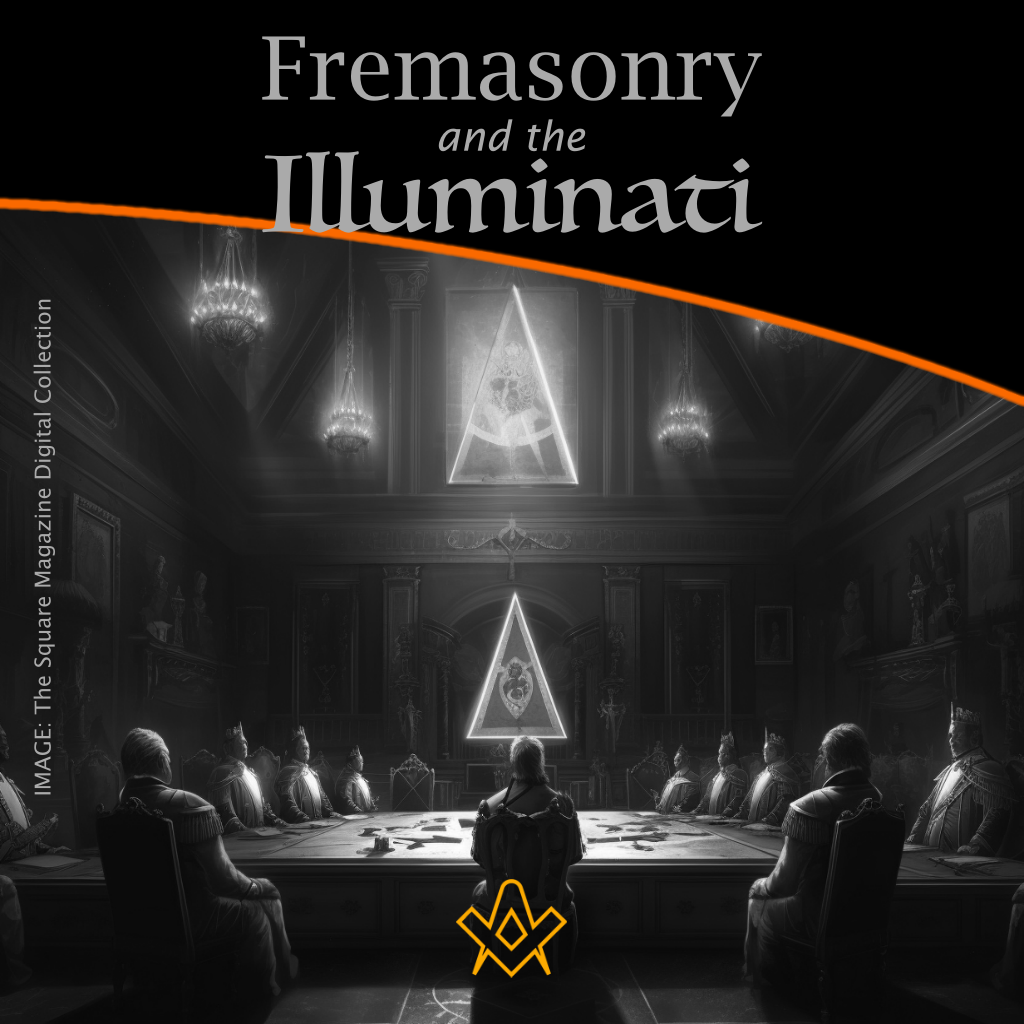Freemasonry and the Illuminati
Freemasonry and the Illuminati are two separate societies that have captured the public imagination for centuries.
Both organizations have been the subject of numerous conspiracy theories, with many people believing that they are part of a shadowy cabal that controls world events.
But what is the truth behind these groups? Are they real, or are they just myths and legends? In this article, we will explore the history of Freemasonry and the Illuminati, and separate fact from fiction.
The History of Freemasonry
Freemasonry is a fraternal organization that has been around for centuries. Its origins are shrouded in mystery, but most historians agree that it emerged in the late 16th or early 17th century. The organization is based on the principles of brotherhood, charity, and truth, and its members are known as Freemasons.
The early masons were craftsmen who worked with stone, such as stonemasons, architects, and engineers. They formed guilds, or groups, to share knowledge and skills, and to regulate their trade. As the organization grew, it expanded its membership to include non-craftsmen, and it became a social and philanthropic society.
Today, Freemasonry is a global organization with millions of members. Its lodges can be found in almost every country in the world, and its members include people from all walks of life, including politicians, celebrities, and business leaders.
The Origins of the Illuminati
The Illuminati was founded in Bavaria, Germany, in May 1776. Its founder, Adam Weishaupt, who was a professor of canon law at the University of Ingolstadt. Weishaupt was a staunch critic of the Catholic Church and the ruling Bavarian government, and he believed that secret societies were the key to overthrowing these institutions.
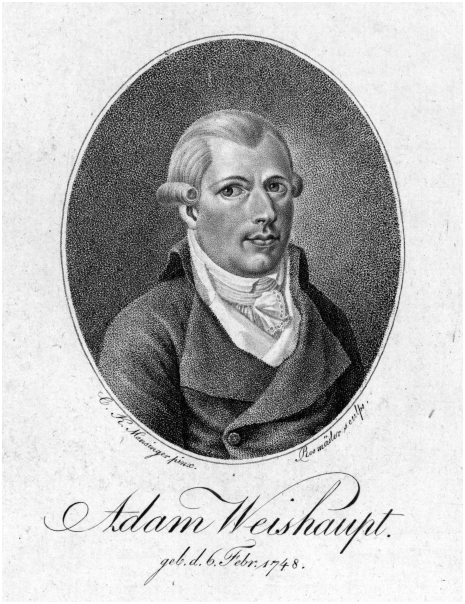
Johann Adam Weishaupt founded the “Illuminati” in 1776, in the Electorate of Bavaria. Initially Illumination was designated for a group of outstanding and enlightened individuals in the society. Indeed, the word was adapted from a Latin root, Iluminatus, which directly translates to “enlightened.”
IMAGE LINKED: wikimedia Attribution 4.0 International (CC BY 4.0)
The Illuminati’s goals were ambitious. Weishaupt wanted to create a society that was free from religion and superstition, and that was based on reason and science. He believed that the Illuminati could help to bring about a new world order, in which the rulers would be enlightened and the people would be free.
The Illuminati was initially successful in attracting members, and it quickly grew into a powerful organization. Its members included prominent politicians, writers, and scientists, and it had branches in several European countries. However, the Illuminati’s success was short-lived. In 1784, the Bavarian government discovered the organization’s existence, and it was banned.
Freemasonry and the Illuminati: Connections and Differences
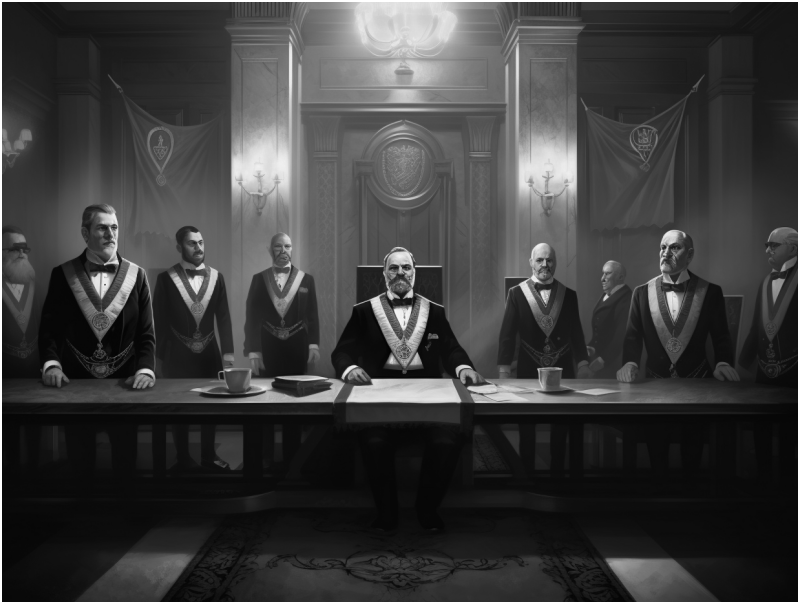
The Illuminati – secret temple
IMAGE CREDIT: The Square Magazine Digital Collection
The connections between Freemasonry and the Illuminati are the subject of much debate. Some conspiracy theorists believe that the Illuminati infiltrated Freemasonry, and that the two organizations are part of a larger conspiracy to control world events. However, there is little to no evidence to support these claims.
While there may have been some overlap between the two organizations in the past, Freemasonry and the Illuminati are fundamentally different.
Freemasonry is a fraternal organization that is based on the principles of brotherhood, charity, and truth. Its members are known as Freemasons, and they are sworn to secrecy about their activities.
The Illuminati, on the other hand, was a secret society that was dedicated to the overthrow of the ruling class and the establishment of a new world order. Its members were known as Illuminati, and they were sworn to secrecy about their activities. The Illuminati’s goals were far more ambitious than those of Freemasonry, and its methods were far more radical.
The Illuminati Conspiracy Theories
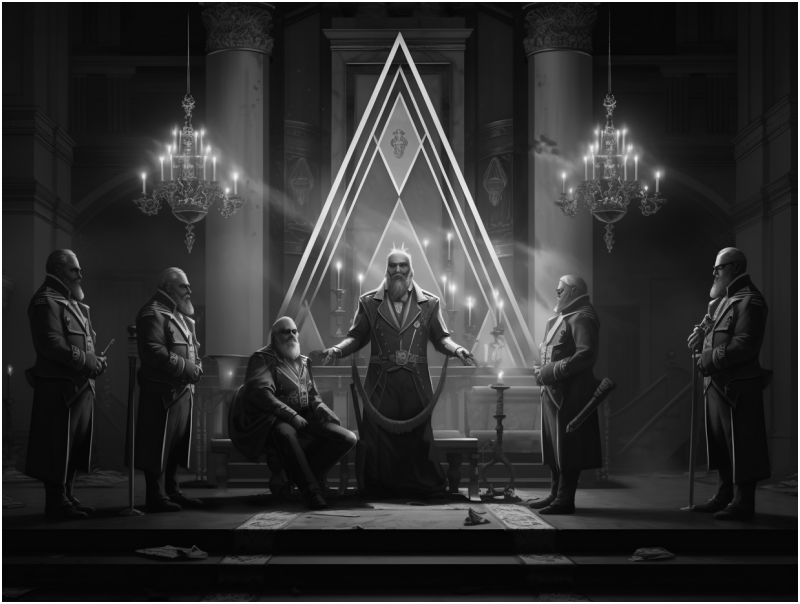
The Illuminati – secret temple
IMAGE CREDIT: The Square Magazine Digital Collection
Despite the lack of evidence linking Freemasonry and the Illuminati, the two organizations have been the subject of numerous conspiracy theories. Many people believe that the Illuminati still exists, and that it is secretly controlling world events.
One of the most popular Illuminati conspiracy theories is that the organization was responsible for the French Revolution. According to this theory, the Illuminati infiltrated the Freemasons in France, and used their influence to foment the revolution.
The Illuminati allegedly wanted to create chaos in Europe, so that they could take over and establish their new world order.
There is little evidence to support this theory, however. While some French revolutionaries may have been influenced by Illuminati ideas, the revolution was primarily driven by political and economic factors, not secret societies.
Another popular Illuminati conspiracy theory is that the organization was responsible for the assassination of President John F. Kennedy. According to this theory, the Illuminati wanted to prevent Kennedy from interfering with their plans for world domination. The theory is based on a number of supposed symbols and connections that link Kennedy’s assassination to the Illuminati.
Again, there is little evidence to support this theory. While it is possible that Kennedy’s assassination was part of a larger conspiracy, there is no conclusive proof that the Illuminati was involved.
Modern-Day Freemasonry and the Illuminati
Today, Freemasonry and the Illuminati are very different organizations than they were in the past. Freemasonry is a legal and recognized organization, and its members are open about their membership.
The organization has evolved into a social and philanthropic society, and its members work to support charitable causes and promote social welfare.
The Illuminati, on the other hand, is a largely defunct organization. While there are still some groups that claim to be the Illuminati, there is no evidence that they are linked to the original organization. The Illuminati’s goals of world domination and the establishment of a new world order are largely seen as unrealistic and out-of-touch with modern reality.
Conclusion
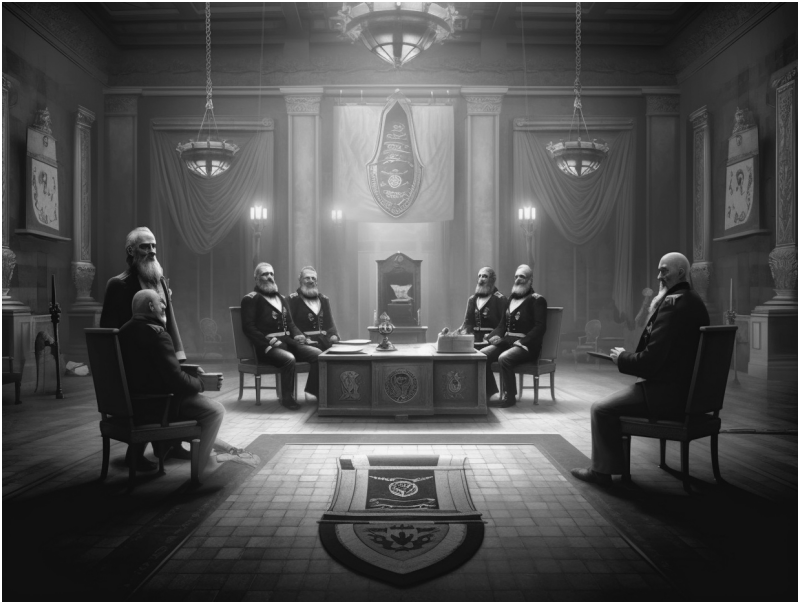
The Illuminati – secret temple
IMAGE CREDIT: The Square Magazine Digital Collection
Freemasonry and the Illuminati are two completely separate societies that have captured the public imagination for centuries. While both organizations have been the subject of numerous conspiracy theories, there is no evidence to support the claims that they are part of a larger conspiracy to control world events.
Freemasonry is a fraternal organization that is based on the principles of brotherhood, charity, and truth. The organization has evolved into a social and philanthropic society, and its members work to support charitable causes and promote social welfare.
The Illuminati, on the other hand, was a secret society that was dedicated to the overthrow of the ruling class and the establishment of a new world order. While the organization was successful in attracting members in the past, it was ultimately banned by the Bavarian government.
While the history of Freemasonry and the Illuminati is fascinating, it is important to separate fact from fiction. The organizations are fundamentally different, and there is little evidence to support the claims of conspiracy theorists.
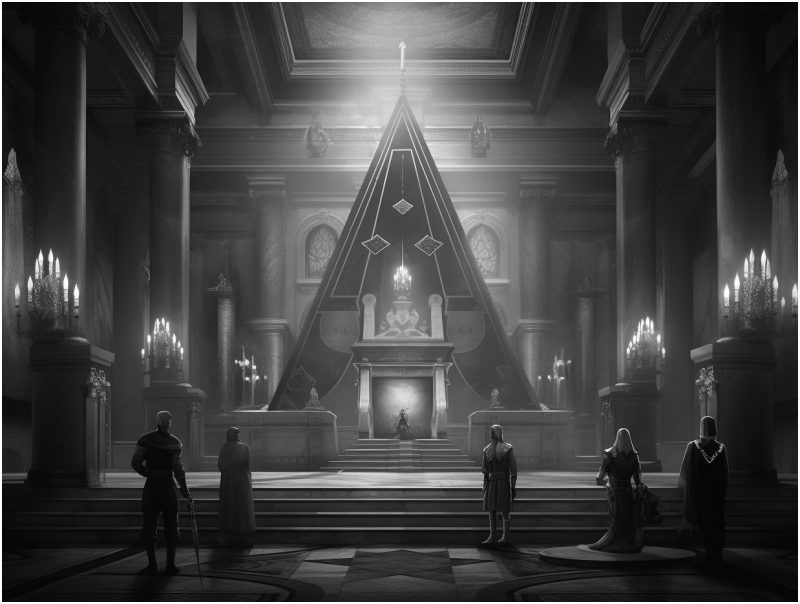
The Illuminati – secret temple
IMAGE CREDIT: The Square Magazine Digital Collection

The Bavarian Illuminati:
The Rise and Fall of the World’s Most Secret Society
By: René Le Forestier (Author), Jon E. Graham (Translator)
The definitive history of the Bavarian Order of the Illuminati and their founder, Adam Weishaupt
• Details the rise and fall of this famous and infamous Order, including its penetration of Bavarian society and its destruction by the Bavarian government
• Explains the Bavarian Illuminati’s grades, rituals, ceremonies, and fundamental philosophies and examines the leaders of the Order
• Contains the only surviving record of documents that were destroyed during the two World Wars
The Bavarian Order of the Illuminati is the most celebrated secret society in the world. Though officially lasting only 11 years, the powerful spell and shadow cast by the Illuminati still looms in the present day, where its influence can be seen in current conspiracy beliefs and actions by powerful individuals working in the shadows.
The original Order of the Illuminati was founded by Bavarian professor Adam Weishaupt in 1776. Although the order was banned and brought down by the Bavarian Elector in 1787–when he became aware of the extent to which it had infiltrated the courts, schools, and his own administration–its legend and deep influence lives on to this day.
Charting the rise and fall of this infamous order, this book–first published in French in 1915 and never before available in English–remains the definitive history of the Order of the Bavarian Illuminati.
It also offers a revealing look at the world that spawned and shaped it: a ceaseless ferment of revolutionary and occult ideas and the ceaseless attempts by crown and church to suppress them.
Other secret societies that shared the stage with the Illuminati during these years include the Templar Strict Observance, von Hund’s Templar Freemasonry, and other Masonic lodges the Illuminati targeted to subvert for their own purposes.
Many of the documents the author consulted for the writing of this book were destroyed during the two World Wars, making this book the only surviving record of many of the order’s secrets.
The author explains the Bavarian Illuminati’s grades, rituals, and ceremonies as well as its fundamental philosophies.
He paints vivid portraits of the leaders of the order, including Weishaupt, Baron Knigge, and Xavier von Zwack. He reveals how Weishaupt early on decided to subvert the existing German Freemason Lodge as a shortcut to gain esoteric hegemony over the occult world, all in order to extend Illuminati influence into the society at large and the government.
The author also provides extensive detail of the order’s eventual destruction by the Bavarian government.
In addition to its revelation of little-known secrets of the Illuminati Order, the author also sheds new light on much of the occult life of this time, including the activities of figures such as Cagliostro and Mirabeau and other active groups such as Freemason chapters, the Rosicrucians, and the Martinists.

The Bavarian Illuminati in America: The New England Conspiracy Scare, 1798
By: by Vernon Stauffer (Author)
A conspiracy theory flourished in New England in 1798, destroying reputations and lives—but few have ever heard the story. This gripping book chronicles the rise of the Bavarian Order of Illuminists, surveying the tumultuous political, social, and religious atmosphere that allowed the organization to take root in the United States.
Author Vernon Stauffer characterizes the mood in New England after the Revolutionary War, an atmosphere of religious disaffection and political confusion that fostered the development and spread of panic and hysteria.
Stauffer traces the European beginnings of the Bavarian Order of Illuminists and the transmission of its legend across the Atlantic, culminating in the effects of the Illuminati agitation in New England.
This strictly factual account incorporates no conjecture and is enhanced by extensive footnotes. A compelling work of forgotten history, it is an essential resource for readers interested in the origins of conspiracy theory in American social and political thought.
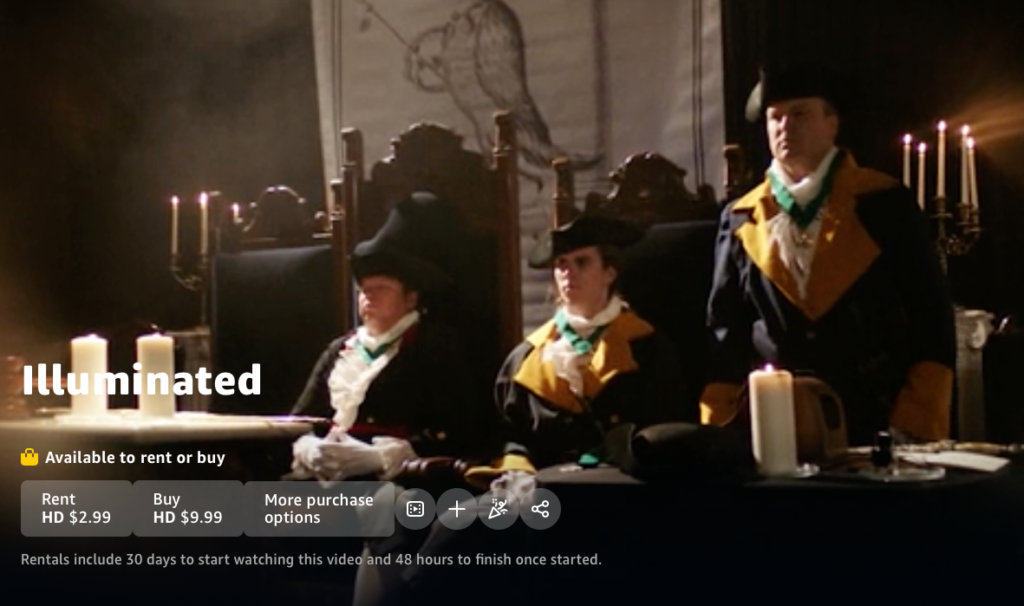
Recent Articles: masonic history
 Protestantism and Masonic Influence in Brazil Discover the untold story of how Freemasons helped Southern Americans immigrate to Brazil post-Civil War, fostering economic and educational growth in Santa Bárbara d’Oeste and Americana. Learn about their pivotal role in establishing Protestant churches and ensuring the secularity of the Brazilian State amidst a Catholic-dominated society. |
 Explore the proper use of the sacred word in Brazilian Freemasonry through an analysis of Masonic literature and Bible translations. Uncover the errors in pronunciation and the need for corrections to maintain liturgical coherence in rituals. Discover insights on Masonry, rituals, and the Hebrew word Boaz. |
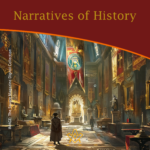 Narratives of History |
 A Very Royal Sesquicentenary |
 Unveiling the Enigma: Discover the Royal Society's Legacy and its Impact on Science. Delve into the fascinating history of the Royal Society, the prestigious UK academy shaping scientific progress since 1660. Explore its pivotal role in advancing knowledge, fostering collaboration, and unlocking the secrets of the universe. Prepare to be amazed! |
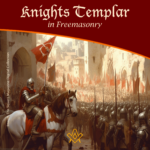 Knights Templar in Freemasonry Uncover the Mysteries of the Knights Templar in Freemasonry! Delve into the intriguing world where chivalry and symbolism intertwine. Discover the captivating rituals and ancient secrets behind the Knights Templar Masonic Orders. Explore the historical connection and delve into the enigmatic narratives that continue to fascinate enthusiasts today. Unveil the hidden truths now! |
 The Royal Arch stands as the rainbow of promise in the Ritual; it stands as the promise of the resurrection; of that which was lost and that it shall be recovered. The question arises as to whether the Master's Word was originally communicated in the Third Degree? On this point there is some diversity of opinion. Originally published in 1915, this insight into the Fourth Degree – the Holy Royal Arch – is as relevant today as it was over 100 years ago. |
 Unveiling the Mysteries of Druidism: Discover the Intriguing Connection with Freemasonry. Explore the ancient spiritual practice of Druidism and its fascinating ties to the enigmatic world of Freemasonry. Delve into the shared symbolism and rituals that have captivated minds for centuries. Unlock the secrets of these intertwined traditions today! |
 Uncover the legacy of freestone masons and their pivotal role in crafting medieval cathedrals. Discover the artistry behind their techniques, the hierarchy within their craft, and the enduring impact of their intricate carvings. A deep dive into the world of these master craftsmen awaits you! |
 Unearth the intriguing journey from Vincha Culture to Freemasonry. Discover how ancient building methods intertwine with modern Masonic philosophies. This exploration will shed light on the fascinating link between the Serbian term "shestarenye" and the symbolic significance of the compass in Freemasonry. |
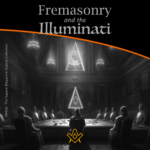 Freemasonry and the Illuminati Unravel the enigmatic world of Freemasonry and the Illuminati in our latest exposé. Dive into centuries-old mysteries, debunk conspiracy theories, and discover the truth behind these elusive societies. Are they puppet masters or mere myths? Join us as we dissect history and fact from fiction. |
 The Île des Templiers, or “Island of the Templars” lies within a leafy park in Paris. The execution site of Jacques du Molay, the last Grand Master of the Knights’ Templar bears a plaque with the epitaph ‘A cet endroit / Jacques de Molay / Dernier grand maître / de l'ordre du temple / a été brûlé le 18 Mars 1314’ (‘In this location / Jacques de Molay / Last grand master / of the order of the temple / was burned on 18 March 1314’) |
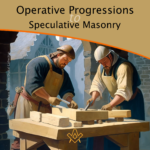 Operative Progressions to Speculative Masonry Both Operative and Speculative Masonry are an important part of the modern fraternity of Freemasonry, which combines elements of both traditions. Today, Freemasonry is a fraternity that is open to men of good character, who are interested in personal development and in making a positive contribution to their communities. |
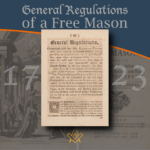 General Regulations of a Free Mason, 1723 General Regulations of a Free Mason as contained in Anderson's Constitutions of the Freemasons, published 1723. the Regulations are of great historical interest. Compiled by George Payne, the second Grand Master of the Premier Grand Lodge of England, they were printed in 1722/3, thus published just over five years after the formation of the Grand Lodge 1717. |
 The Genesis of the 1723 Book of Constitutions 2023, marks the three hundredth anniversary of the publication of the first printed Book of Constitutions of the Grand Lodge formally established in London two years previously. This is an anniversary whose significance extends beyond freemasonry. A paper by Andrew Prescott |
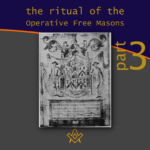 The Ritual of the Operative Free Masons - P3 Existing Operative Free Masons. The ritual I am about to refer, is that of "The Worshipful Society of Free Masons, Rough Masons, Wallers, Slaters, Paviors, Plaisterers, and Bricklayers." By Thomas Carr, M.D., P. M. Honorary Member of the Guild of Operative Free Masons |
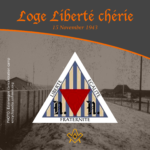 Liberté chérie was a Masonic Lodge founded in 1943 by Belgian Resistance fighters and other political prisoners at Esterwegen concentration camp. It was one of the few lodges of Freemasons founded within a Nazi concentration camp during the Second World War. |
 The Ritual of the Operative Free Masons - P2 If anyone doubts the fact that the formation of Speculative Free Masonry was due to and based upon Operative Free Masonry, it is quite easy to convince him of his error if he will only study the first Book of Constitutions. By Thomas Carr, M.D., P. M. Honorary Member of the Guild of Operative Free Masons |
 In 1881, Freemasonry rose from the ashes of a fire in the mining town of Kokomo, Summit County, Colorado. Corinthian Lodge No. 42, along with Kokomo, no longer exists but it holds the record of having been – at an elevation of 10,618 feet – the highest Masonic Lodge in the USA. |
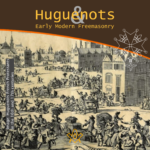 The Huguenots and Early Modern Freemasonry The Huguenots influence in the development of early modern Freemasonry at the time of the formation of the Grand Lodge in London around 1717 / 1723. |
 November is a month of reflection – perhaps due to the fact that we are getting close to the years' end – but also because Remembrance / Armistice Day (11 November) is a significant date in most countries' diaries. |
 Speculative Freemasonry, as practise by Grand Lodge of England, was officially born just over three hundred years ago, is today an international organisation, counting over six million members. It has been subjected to persecution, suppression, and abolition throughout its history. In its infancy, only a couple of decades after its official birth, it had already become a target. |
 The Ritual of the Operative Free Masons - P1 The original paper was written, first, to prove that Speculative Free Masonry was derived from Operative Free Masonry; second, to give some account of the Operative Free Masons, of their Ritual, and of their customs. By Thomas Carr, M.D., P. M. Honorary Member of the Guild of Operative Free Masons |
 American Fraternalism in the 19th and Early 20th Centuries The late 19th and early 20th centuries in the United States has been called the "Golden Age of Fraternalism." How did this come about and why was the idea of joining a fraternal organization so popular? We will explore this question and examine the regalia used by many fraternal organizations in this period. |
 Societas Draconistarum, meaning "Society of the Dragonists"– was a chivalric Order for selected nobility, founded in 1408 by Sigismund von Luxembourg, who through marriage became the King of Hungary (1387–1437) and later Holy Roman Emperor. The Order was fashioned after the military orders of the Crusades, requiring its initiates to defend the cross and fight the enemies of Christianity, in particular the Ottoman Empire. |
 The Perjured Free Mason Detected Was Samuel Prichard a perjured individual, or simply a misguided Freemason? Prichard's book "Free Masonry Dissected" published in 1730, is now used by many Masonic historians as a source of reference with regards to the introduction of the third degree into the Craft. But at the time it was published in 1730, it was not so well received by members of the Grand Lodge of England. |
 17th century and the Holy Royal Arch This article focuses on a period of transition between a point in time when we can safely and historically identify the first formation of what could be called as the ‘Royal Arch’ and the historical events that have preceded it. |
 Most Freemasons have heard the terms 'Operative' and 'Speculative' Masons, and this article helps to understand the difference: |
 Roberts' Constitutions of Freemasonry 1722 Published a year before Anderson's Constitutions, The Old Constitutions Belonging to the Ancient and Honourable SOCIETY OF Free and Accepted MASONS. Originally printed in London England; Sold by J. Roberts, in Warwick-Lane, MDCCXXII.(1722) |
 From 'Songs of religion and life', 1876 by John Stuart Blackie (1809-1895) |
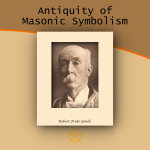 On the Antiquity of Masonic Symbolism Is the Symbolism of Masonry an inheritance derived from the old Masons who flourished before the era of the Grand Lodges (1717); or has it been borrowed from the Rosicrucians or others, after 1717? |
 Mason's Marks – from Egypt to Europe? Mason's marks have been a source of intrigue, not only to Freemasons but to historians and archaeologists. The use of simple pictograms have been employed for millennia by artisans to identify their work. But where did they originate and why? |
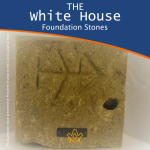 The White House Foundation Stones Further to the articles in our series on the history of the stone masons, we have a rather intriguing addition. During the 1950's renovation of the White House, President Truman retrieved more than 100 stone blocks with stonemasons marks. |
 What the Goose and Gridiron Tavern is in the ancient annals of London Freemasonry, The Green Dragon Tavern is to the memories of the Free-mason, of Boston and New England. |
 Auschwitz concentration camp: video photo article taken in 2013 |
 There are two things of importance happening this day - 27 January |
 Two approaches regarding the understanding of Freemasonry |
 Masonic Research in England c1930 An article which appeared in an American Masonic magazine, c1930 and which was reproduced in England, provoking a little controversy. |
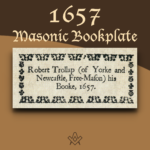 Masonic bookplates the ‘Brethren’s spiritual coats of arms and marks’ |
 The Unlawful Societies Act of 1799 Rebellious Freemasons and the 21st century |
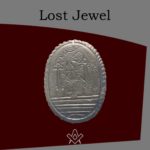 In 1912, Sarah Dowd of Dromore, Ireland, found a Masonic jewel dated 1517 - a date two hundred years before the establishment of Grand Lodge... |
 Freemasonry and Fascist Regime Interesting speech by the famous historian Prof. Aldo A. Mola, who links the fascist regime with the Masonic Associations. |
 Was famous Russian poet Alexander Pushkin a Freemason? And if so, was he a member of the lodge ‘for which all the lodges in Russia were destroyed’? |
 The Importance of Masonic Research Why is accurate - or authentic - Masonic research so important? The importance of making a daily advancement in Masonic knowledge is something that The Square is passionate about promoting. |
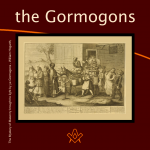 The Antient Noble Order of the Gormogons had a brief existence in the eighteenth century; they left few records or accomplishments, |
masonic knowledge
to be a better citizen of the world
share the square with two brothers

click image to open email app on mobile device


